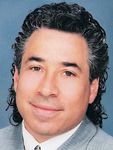- General Dermatology
- Eczema
- Chronic Hand Eczema
- Alopecia
- Aesthetics
- Vitiligo
- COVID-19
- Actinic Keratosis
- Precision Medicine and Biologics
- Rare Disease
- Wound Care
- Rosacea
- Psoriasis
- Psoriatic Arthritis
- Atopic Dermatitis
- Melasma
- NP and PA
- Skin Cancer
- Hidradenitis Suppurativa
- Drug Watch
- Pigmentary Disorders
- Acne
- Pediatric Dermatology
- Practice Management
- Prurigo Nodularis
Article
Lower-face treatments must address root causes
He predicts that more long-lasting, fast-acting fillers will begin emerging in the next couple years.

"Most of the contour changes that occur in the face aren't purely related to gravity and soft tissue descent," says Steven Fagien, M.D., an aesthetic oculoplastic surgeon based here. "The traditional notion and solution was 'It fell, so let's pick it up,' but the concepts here are changing as we begin to understand what actually occurs in the aging face."
MUSCULAR ACTIVITY
This repetitive action also causes local soft tissue atrophy, particularly of fat, and accentuates the problem, Dr. Fagien says.
"For instance," he explains, "facelifts are only part of the answer in many patients for treatment of jowls. For many, a surgical lift has been the cure. But lifting is just a part of the solution, because now that we've looked closer at how and why faces age, we've realized that a lot of the changes that occur are related to volume loss and shifts."
Dr. Fagien says that oftentimes the appearance of jowls is more related to perimental hollows (the depression just in front of the jowl), and that treatment, particularly in the younger patient, can simply involve soft-tissue augmentation with filler material to this area.
He says patients are often fascinated by the fact that the jowl can simply disappear when one adds volume in front of it.
"I do this most commonly with the hyaluronic acids (HAs) or even poly-L-lactic acid," Dr. Fagien says.
The learned facelift surgeon more often injects fat into these areas while simultaneously performing surgery to optimize the result, he says.
"But for patients who are not going through surgery," Dr. Fagien says, "I've corrected some severe perimental atrophy and hollowing by using an over-the-counter injectable like Restylane (Q-Med)."
Nevertheless, he cautions that such procedures are both technique-dependent and may require more volume than other lower facial regions - approximately 1 cc of filler in each hollow.
Therefore, he says, "Patients need to be aware that these newer areas for volume enhancement require higher volumes," and thus cost more. In many practices, he says patients may not be willing to pay the high price tag of several syringes of product for treating perimental hollows. On the plus side, he says his technique allows the filler to last six months; therefore, patients can avoid or postpone surgery while also avoiding downtime.
LEARN BY WATCHING
For any injection technique, Dr. Fagien says the best way to learn is through video or by watching an injection expert at work. "That's how one will gain better experience and get good results. It's not something one can read about and do," he says.
Realistic patient requests and expectations also are crucial to the success of all lower-face treatments, he says. Regarding lip augmentations, Dr. Fagien says, "Patients bring in photographs of people with lips that they would like to have. Frankly, some of them are not possible."
For example, he notes that patients with small lips lack the architecture to handle high-volume lips like Angelina Jolie's. Furthermore, simply injecting the vermilion with fillers may achieve greater projection (and reduce lip rhytids), but it won't make lips fuller, Dr. Fagien says.






